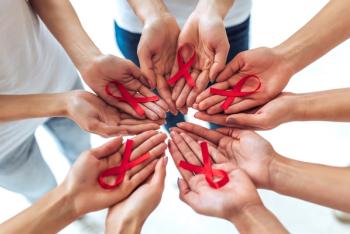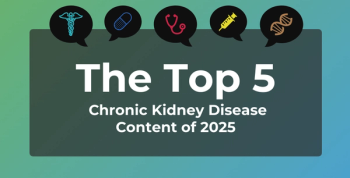
Older Adults on ART Have Double the Mortality Risk of Their HIV-Negative Counterparts
Persons 50 years and older accounted for 3.6 million individuals living with HIV in 2013, and this number almost doubled to an estimated 6.7 million by 2017. Not all, however, are on antiretroviral therapy (ART).
According to the
There is an especially large population of older HIV-positive individuals living in Uganda, part of sub-Saharan Africa, where 2017 estimates pegged the size of this population at 4 million alone in 2017. However, data on their mortality rates and uptake of antiretroviral therapy (ART) are few and far between.
In order to have a more complete picture of this older population, an international group of researchers from Uganda, England, Thailand, and Canada, as well as the World Health Organization (WHO), examined data collected as part of WHO’s Study on global AGEing and adult health (SAGE) Well-being of Older People Study (
“This study contributes to the scanty literature available on survival of HIV infected older adults within the African region,” they noted.
Using 3 waves of data from SAGE-WOPS, the authors compared mortality among 517 study participants 50 years or older who were HIV-negative, HIV-positive on ART, and HIV-positive not on ART. The 3 waves of data covered 2009 to 2010 (wave 1), 2012 to 2013 (wave 2), and 2015 to 2016 (wave 3). The median (interquartile range [IQR]) ages of the participants at study entry were 69.2 (60-77) and 56.6 (53-62; P < .0001) years, respectively, in the HIV-negative and HIV-positive cohorts.
The 2009-2010 wave consisted of both HIV-negative and -positive study participants, with the latter currently taking ART or waiting to initiate treatment with it. The 2012-2013 wave included as many wave 1 participants as possible (63 died, 148 were not seen), in addition to 100 more older HIV-positive individuals. The 2015-2016 wave comprised all living participants from waves 1 and 2 who still lived in the study area. Between waves 1 and 2 and waves 2 and 3, all HIV-negative individuals received an HIV test so that data were not misclassfied.
Following estimates from a Cox survival model, the results showed an adjusted hazard ratio (aHR) for risk of death—based on age, sex, marital status and hypertension—of 1.89 (95% CI, 1.0-3.4; P = .04) among the entire HIV-positive population compared with an aHR of 1.00 in the HIV-negative cohort. This dropped to 1.75 (95% CI, 0.9-3.5; P = .11) among the HIV-positive population taking ART. The greatest mortality risk was seen in the HIV-positive study population not taking ART, at 2.09 (95% CI, 1.0-4.4; P = .05), while the lowest of 1.19 (95% CI, 0.6-2.5) was found among HIV-positive participants on ART.
“Our study found that older adults living with HIV, including those on ART, had a risk of mortality that was nearly twice as high as HIV-negative older adults,” the authors concluded.
Some proposed reasons for the longer survival of older patients with HIV on ART include more effective therapies, better adherence rates, and the immunological/virological response. On the flip side, this group also sees more patients progressing to AIDS faster and overall shorter survival times.
Therefore, the authors recommend further longitudinal studies on ART use among HIV-positive individuals who are 50 years or older.
Reference
Okello JM, Nash S, Kowal P, et al. Survival of people aged 50 years and older by HIV and HIV treatment status: findings from three waves of the SAGE‑Wellbeing of Older People Study (SAGE‑WOPS) in Uganda. AIDS Res Ther. Published online May 14, 2020. doi:10.1186/s12981-020-00276-1
Newsletter
Stay ahead of policy, cost, and value—subscribe to AJMC for expert insights at the intersection of clinical care and health economics.









































